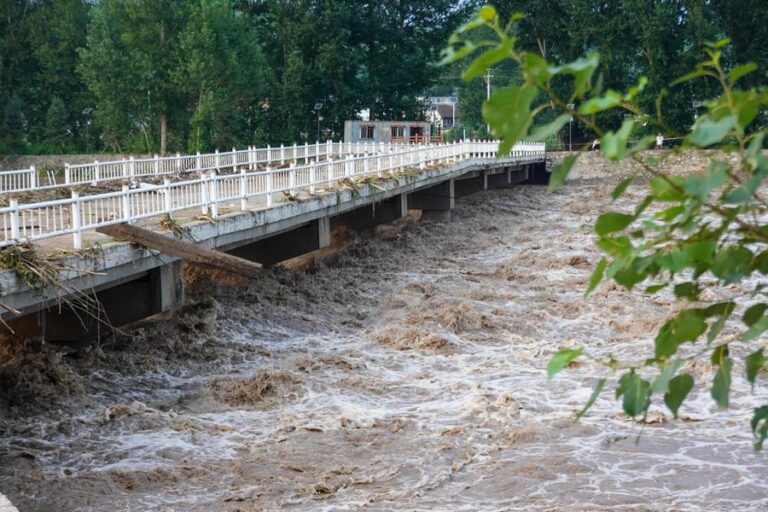Deadly Floods in Beijing Kill Dozens, Force Mass Evacuations
More than 30 people have died and over 80,000 residents have been displaced after record rainfall triggered massive floods in Beijing and neighbouring Hebei.

Flood damage in Beijing’s Miyun district after days of intense rainfall forced thousands to evacuate. Photo: @XHNews
July 29, 2025 Hour: 7:45 am
Severe flooding in Beijing and surrounding regions has left more than 30 people dead, prompting large-scale evacuations and triggering a top-level emergency response in China’s capital.
RELATED:
Fragile Ceasefire Between Thailand and Cambodia Faces First Test
More than 30 people have died as a result of intense rainfall and flooding in Beijing and neighbouring Hebei province, according to Chinese state media. In the hard-hit Miyun and Yanqing districts on the outskirts of the capital, at least 30 fatalities were confirmed by midnight Monday, state broadcaster CCTV reported.
In neighbouring Hebei province, a landslide caused by the same weather system killed four people, with eight others still missing. The heavy rain began over the weekend and intensified on Monday, with Beijing registering up to 543.4mm of rainfall in its northern districts, according to Xinhua.
In response, authorities relocated more than 80,000 residents, as infrastructure across the region sustained severe damage. Roads were washed out, power poles downed, and 136 villages were left without electricity by Monday night.
Chinese president Xi Jinping ordered “all-out” rescue operations to minimise further loss of life. Premier Li Qiang acknowledged the “significant casualties” in Miyun district and called for coordinated relief efforts.
Beijing issued its highest-level alerts for rain and flooding, urging residents to remain indoors. Schools were closed, construction halted, and tourism activities suspended until further notice. Authorities also began releasing water from the Miyun Reservoir, which reached its highest level since its construction in 1959, warning downstream residents of rising river levels amid ongoing rain forecasts.
Local reports described extensive destruction. Cars were swept away, trees uprooted, and streets in towns like Taishitun—100 km northeast of central Beijing—were submerged in muddy water. “The flood came rushing in, just like that, so fast and suddenly,” said Zhuang Zhelin, who was clearing debris from his family’s building supplies shop.
By Tuesday morning, over 730 million cubic meters of water had flowed into the Miyun Reservoir, the largest in northern China. The central government allocated 50 million yuan (approximately \$7 million) to Hebei and dispatched emergency teams to the affected regions.
The extreme weather comes just a year after floods in Beijing killed dozens and displaced over a million people. At the time, authorities faced criticism for flood management strategies that diverted water into Hebei, exacerbating local damage.
These floods form part of a broader pattern of climate-driven disasters affecting regions across the globe. Experts point to human-induced climate change as a key factor increasing the frequency and severity of extreme weather events such as floods, wildfires and heatwaves.
With rain continuing and more storms forecast, authorities in Beijing and Hebei remain on high alert. The current crisis underscores growing climate vulnerabilities in China’s most densely populated regions and raises renewed questions about the government’s disaster preparedness and response strategy.
Author: MK
Source: EFE - Xinhua


